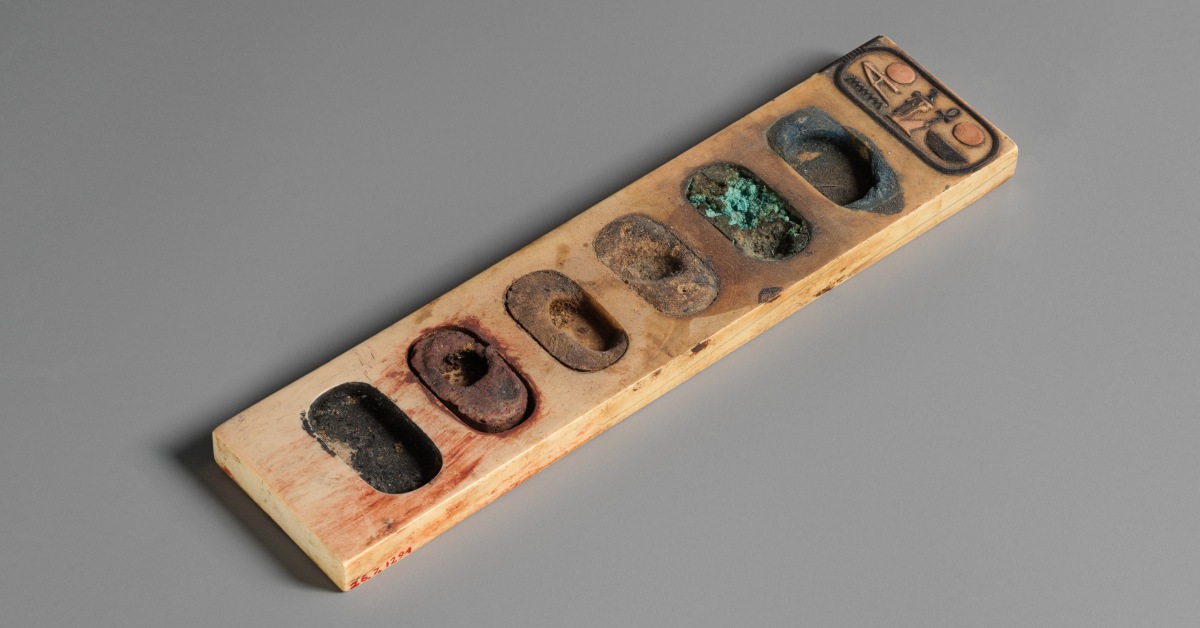Made out of a single piece of ivory, this ancient Egyptian painter’s palette contains six oval paint wells that still contain cakes of blue, green, brown, yellow, red, and black pigments.

The Metropolitan Museum of Art in New York City holds a beautifully preserved painter’s palette dating back to 1390-1352 BCE.
Besides the remnants of pigments, the tool also has an inscription of the pharaoh Amenhotep III in hieroglyphics as well as the epithet “beloved of Re.”

Amenhotep III, also known as Amenhotep the Magnificent, was the ninth pharaoh of the Eighteenth Dynasty.
His lengthy reign (ca. 1386-1349 BC) was a period of unprecedented prosperity and splendour, when Egypt reached the peak of its international power.
This era was filled with achievements in art and culture, as reflected the sophistication of this simple painter’s tool which gives us a perfect hint of how elaborate the artistic pieces it was used to create must have been.

A beautiful reminder of the times when the civilization of ancient Egypt was leading the way in the fields of art, architecture and engineering.
Sources: 1, 2, 3
